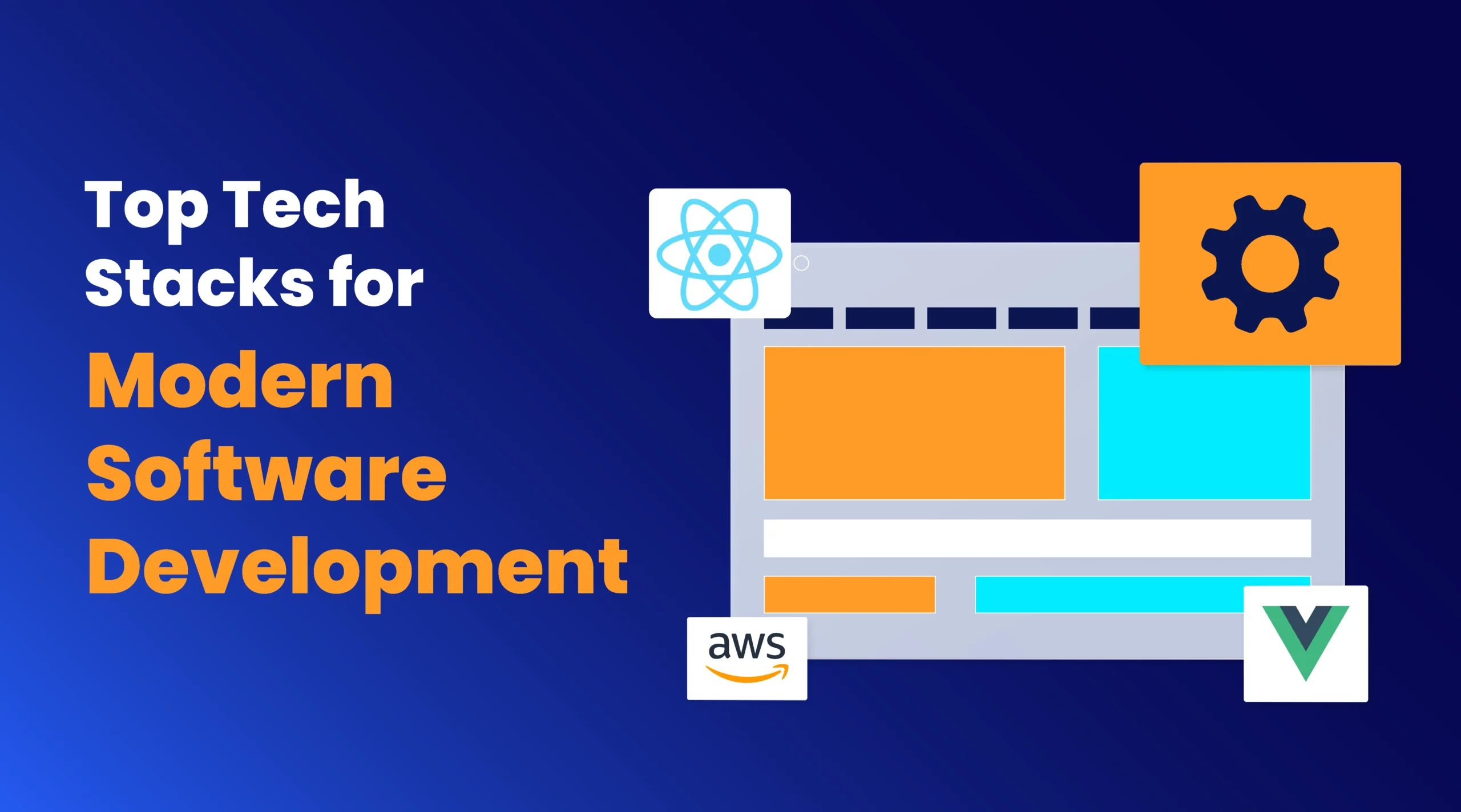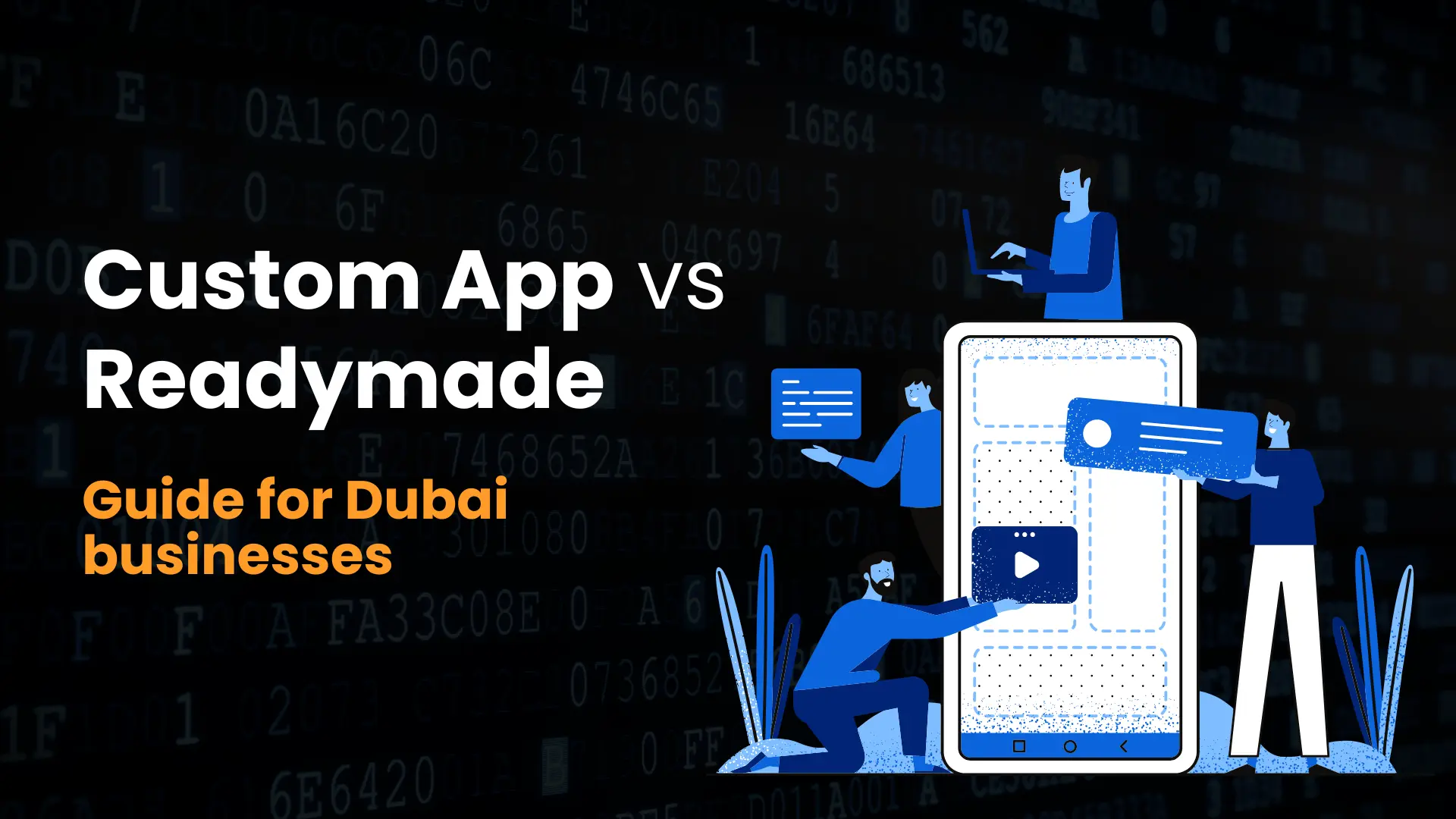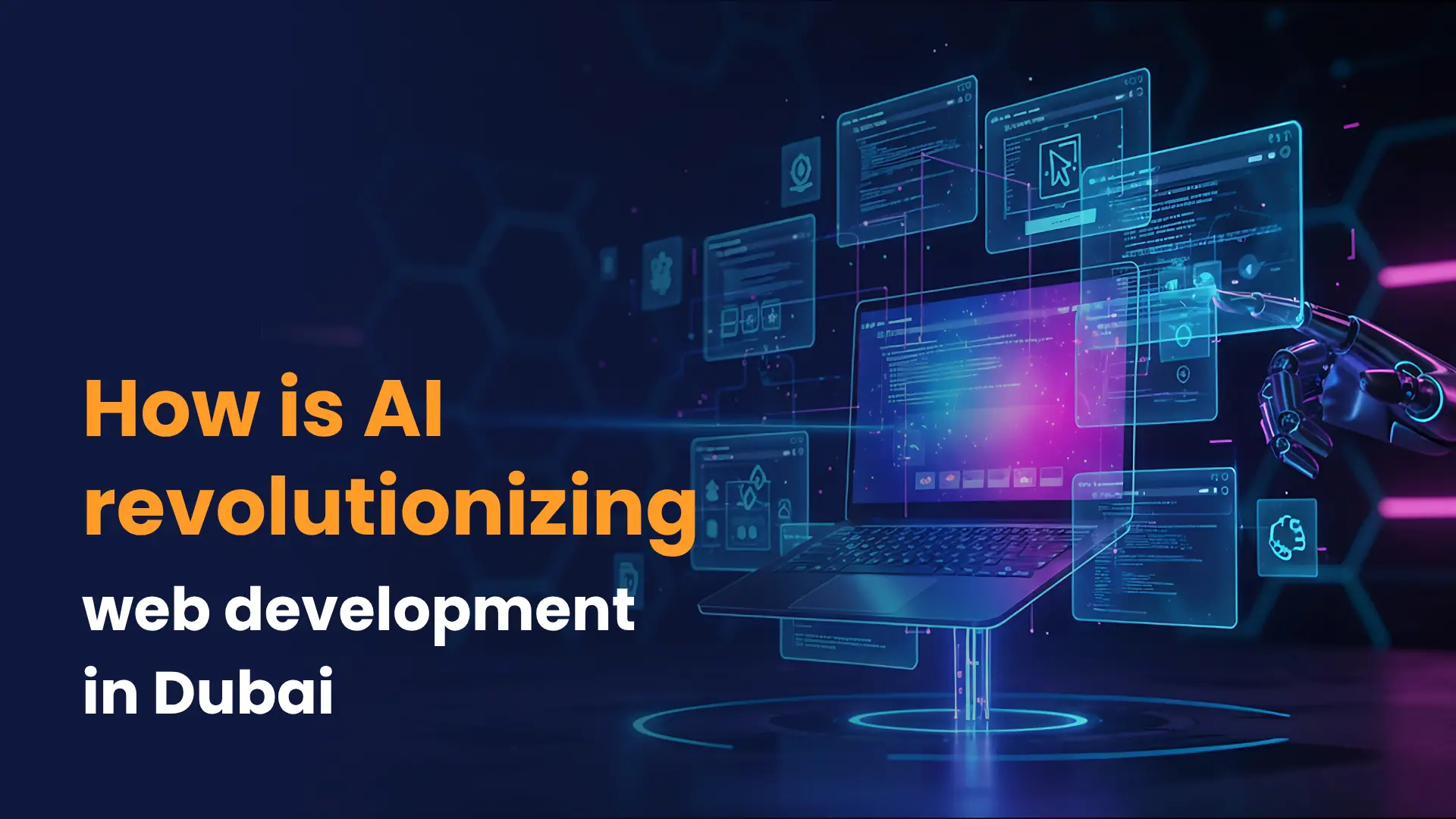Contents
- 1 At a Glance: Top Software Tech Stacks for 2025
- 2 Introduction: Why the Right Tech Stack Matters for your GCC Software Development project
- 3 Dissecting a Modern Software Development Tech Stack
- 4 Top Software Development Tech Stacks for 2025 (GCC Focus)
- 5 Selecting the Right Stack: Key Considerations for GCC Businesses
- 6 Technology Trends Impacting GCC Software Development in 2025
- 7 How Competenza Helps You Choose and Implement the Right Stack
- 8 Conclusion
- 9 FAQs
At a Glance: Top Software Tech Stacks for 2025
- MEAN/MERN stacks offer full JavaScript consistency and seamless developer collaboration for web applications, a popular choice among GCC startups.
- LAMP stack remains a dependable option for SMEs, with broad PHP and MySQL support, making it cost-effective and easy to maintain .
- .NET Core and Java/Spring Boot are favored by enterprises for their maturity, robust security standards, and compliance compatibility
- JAMstack and Serverless architectures (AWS Lambda, Azure Functions) are rising for their performance, reduced complexity, and ease of deployment
- Flutter + Firebase is emerging for mobile and web convergence, enabling faster, single-codebase deployments with real-time features .
- Cloud-native and AI-ready stacks powered by Kubernetes and microservices are foundational for GCC digital centres intent on innovation and resilience
Introduction: Why the Right Tech Stack Matters for your GCC Software Development project
Successful software projects are built on the foundations of an effective technology stack. In the GCC region, the pace of digital transformation is accelerating.
Governments across Saudi Arabia, the UAE, Qatar, Kuwait, and other GCC regions are investing heavily in national digital initiatives like- Digital agenda 20230, Qatar, UAE’s Smart Government Strategy, eOman, Saudi Arabia’s Vision 2030, and others.
The right stack choice impacts development speed, application performance, and total cost
of ownership.
GCC software in 2025 must also support Arabic localization, regional payment gateways, and compliance with data protection laws like UAE’s Personal Data Protection Law (PDPL) and Saudi Arabia’s NCA regulations.
Product teams and decision-makers should focus on selecting frameworks and tools that align with regional infrastructure, user behavior, and emerging tech like AI and IoT.
This blog highlights the most reliable and widely adopted tech stacks for software development in 2025, with insights tailored to the GCC market.
Dissecting a Modern Software Development Tech Stack
A modern software development tech stack consists of integrated layers that enable applications to be robust, scalable, and user-friendly. Each component serves a distinct purpose and should be chosen based on project complexity, performance requirements, and business objectives.
1. Frontend (Client-Side) Development
This is where user interactions happen. A strong frontend stack ensures responsive and engaging interfaces.
- Popular Technologies: React.js, Angular, Vue.js
- Why it matters: Responsive and intuitive UI directly impacts user retention and satisfaction.
2. Backend (Server-Side) Development
Backend logic handles business processes, database operations, and APIs. A reliable backend is critical for application performance and security.
- Popular Technologies: Node.js, Django, Laravel, .NET Core, Spring Boot
- Why it matters: Your backend powers everything the user doesn’t see—data storage, logic, security, and system integrations.
3. Database Management
The database stores and organizes application data. Choosing the right type: relational or NoSQL depends on your data structure and scalability requirements.
- Popular Technologies: PostgreSQL, MySQL, MongoDB, Firebase
- Why it matters: A well-structured database boosts performance and data integrity, especially in high-transaction environments.
4. DevOps and CI/CD Tools
These tools help automate code integration, testing, and deployment for faster releases and higher reliability.
- Popular Tools: Docker, Jenkins, GitHub Actions, Kubernetes, Terraform
- Why it matters: Automation reduces deployment risks and enables continuous innovation.
5. Cloud Infrastructure
Cloud platforms provide the flexibility and scalability needed for modern applications. Most GCC enterprises now prefer cloud-native architectures.
- Popular Platforms: AWS MENA, Microsoft Azure UAE, Google Cloud Platform
- Why it matters: Cloud infrastructure supports cost-effective scaling, disaster recovery, and global performance.
6. APIs and Third-Party Integrations
APIs help connect different services, from payment gateways to analytics and CRM systems.
- Popular Examples: RESTful APIs, GraphQL, Stripe, Twilio, Salesforce APIs
- Why it matters: Integrations improve time-to-market and enable advanced features without reinventing the wheel.

Top Software Development Tech Stacks for 2025 (GCC Focus)
Choosing the right stack for software development is the crucial aspect that determines the user experience, performance and long-term success of the software.
Below are the most relevant stacks for the GCC region companies in 2025
1. MEAN Stack (MongoDB, Express.js, Angular, Node.js)
MEAN offers a full JavaScript environment, ideal for building scalable and real-time web applications. With Node.js at the backend and Angular on the frontend, this stack supports rapid development cycles and consistent performance across large-scale solutions.
- Pros: Unified JavaScript stack, cost-effective, scalable.
- Cons: Angular’s learning curve may underperform in SEO-heavy applications.
- GCC Fit: Logistics, fintech, and service-based platforms in KSA and UAE.
2. MERN Stack (MongoDB, Express.js, React, Node.js)
MERN replaces Angular with React for more flexibility in UI rendering and component-based development. It’s particularly effective for high-performance SPAs and applications that require dynamic interfaces.
- Pros: Fast rendering, modular architecture, strong React community
- Cons: Routing and state management require third-party support.
- GCC Fit: eCommerce and SaaS platforms in Dubai, Riyadh.
3. LAMP Stack (Linux, Apache, MySQL, PHP)
A classic and battle-tested stack, LAMP is still relevant for content-heavy applications and administrative portals. It’s ideal for custom software development projects that prioritize cost control and wide developer availability.
- Pros: Reliable, mature, budget-friendly.
- Cons: Less modern architecture, lower scalability.
- GCC Fit: Government and education systems in Oman, Bahrain.
4. .NET Stack (C#, ASP.NET, SQL Server)
Microsoft’s .NET stack offers unmatched support for enterprise systems with complex workflows. It’s commonly used where security, scalability, and long-term support are priorities, making it ideal for software development companies in the UAE serving banking and healthcare sectors.
- Pros: Enterprise-grade tools, secure, excellent IDE support.
- Cons: Higher licensing costs, Windows-dependency unless using .NET Core.
- GCC Fit: Used in banking, healthcare, and insurance in UAE, Qatar.
5. JAMstack (JavaScript, APIs, Markup)
JAMstack separates the frontend from backend logic, resulting in blazing-fast, highly secure solutions. It’s well-suited for Perfect for software development projects like static sites that demand speed, SEO-friendliness, and a headless CMS approach.
- Pros: Lightning-fast, secure, no server maintenance.
- Cons: Limited dynamic functionality, heavy reliance on APIs.
- GCC Fit: Real estate, tourism, and media platforms across the region
6. Serverless Stack (AWS Lambda, Firebase, Azure Functions)
Serverless allows developers to build applications without managing servers. This pay-as-you-use model is especially useful for startups testing PMF and apps with variable usage patterns.
- Pros: Highly scalable, efficient for MVPs, no server management.
- Cons: Cold-start latency, limited control, vendor lock-in risk.
- GCC Fit: Startup MVPs and digital-first apps in the UAE and KSA.
7. Python Stack (Python, Django/Flask, PostgreSQL)
Python-based stacks are favored in AI, ML, and data-intensive applications. Frameworks like Django and Flask enable rapid development and secure API building.
- Pros: Clean syntax, great for AI/ML, strong data processing.
- Cons: Slower than compiled languages, less optimal for mobile.
- GCC Fit: Smart city tech, analytics platforms, government-led AI projects.
5. Flutter + Firebase
Best suited for mobile app development targeting both iOS and Android markets. Google’s Flutter framework enables single-codebase development for multiple platforms, while Firebase provides backend-as-a-service functionality ideal for rapid prototyping.
- Pros: Single codebase, native performance, real-time features
- Cons: Limited third-party libraries, newer ecosystem
- GCC Fit: Mobile-first applications, consumer apps, small business solutions

Selecting the Right Stack: Key Considerations for GCC Businesses
The tech stack used for software development needs to align the business needs with technology.
6 factors to evaluate-
1. Application Type and Complexity
The type of application—web, mobile, or hybrid, influences the stack. Mobile-first apps targeting GCC users should prioritize frameworks like Flutter or React Native for fast, responsive UI across platforms.
High-performance enterprise systems may benefit from .NET Core, Java Spring Boot, or Node.js for scalable backend infrastructure.
2. Security and Regulatory Compliance
In a region with rising cyber threats and emerging privacy laws like UAE’s Personal Data Protection Law (PDPL) and Saudi Arabia’s NCA regulations, data security is non-negotiable.
Choose stacks with built-in support for secure authentication, encrypted communication, and modular compliance integration.
3. Developer Availability and Talent Ecosystem
Access to qualified developers impacts both cost and continuity. JavaScript stacks like MERN/MEVN remain popular due to large talent pools locally like Dubai & Riyadh.
If you’re hiring or outsourcing in the GCC, consider stack popularity in local markets like Dubai, Riyadh, and Doha, where demand for Laravel, .NET, and Flutter is growing.
4. Time-to-Market and Scalability
Modern GCC businesses, especially startups and digital-first enterprises, prioritize fast deployment cycles. Using low-code platforms or prebuilt integrations (like Firebase with React Native) can drastically reduce go-to-market time. Ensure your stack also scales smoothly as user load increases.
5. System Integration and Legacy Compatibility
Many businesses in the GCC are still modernizing older systems. If you’re integrating with existing CRMs, ERPs, or payment infrastructure, the tech stack should support open APIs, robust middleware, and data interoperability—especially for sectors like retail, logistics, and finance.
6. Cost-Efficiency Over the Project Lifecycle
Factor in not just development cost, but long-term maintenance, licensing, and hosting. Open-source stacks reduce upfront costs, while cloud-native options like AWS Lambda or Azure Functions help optimize infrastructure spending as usage grows.
Technology Trends Impacting GCC Software Development in 2025
Technology trends that redefine how software is built, deployed, and scaled also affect the tech stack choices in turn
1. Cloud-Native and Serverless Architectures
Cloud-native stacks (like those built on AWS Lambda, Azure Functions, or Kubernetes) enable applications to be highly scalable, modular, and cost-efficient. Serverless computing reduces infrastructure overhead and accelerates deployment.
As governments and enterprises across the UAE and Saudi Arabia migrate to cloud infrastructure, development stacks must support containerization, microservices, and auto-scaling capabilities, and seamless integration with public cloud platforms.
2. AI and Machine Learning Integrations
With increasing data-driven personalization, automation, and predictive analytics, AI integration has become a core expectation.
Tech stacks now need to support Python, TensorFlow, PyTorch, and data processing tools like Apache Spark.
Whether it’s real-time analytics for fintech or smart automation in logistics, your stack must enable fast AI model deployment and integration with ML pipelines.
3. Headless CMS and Composable Architecture
GCC retail and content-heavy sectors are moving towards headless CMS solutions (like Strapi, Contentful, or Sanity) to decouple backend content from frontend delivery.
This shift supports omnichannel experiences and enhances performance. Composable architecture is where best-of-breed services are stitched together via APIs, which demands a modular stack built around flexibility and extensibility, often using JAMstack principles and GraphQL for frontend optimization.
4. API-First Software Architecture
API-first design is essential today. As GCC enterprises seek ecosystem integration (e.g., payment systems, CRM, logistics APIs), stacks must be built with robust RESTful or GraphQL APIs at their core.
This ensures interoperability, faster partner onboarding, and future scalability. Frameworks like Express.js, FastAPI, and NestJS are increasingly favored for backend development.
5. Low-Code and No-Code Development Platforms
These platforms are transforming how digital tools are built, especially for non-technical teams and fast-moving SMEs.
In the GCC, where demand often outpaces tech talent, tools like OutSystems, Microsoft Power Apps, and Mendix allow faster iteration and app deployment with limited developer involvement.
While not suited for all use cases, they are increasingly integrated alongside traditional stacks to support rapid prototyping and building MVPs.
How Competenza Helps You Choose and Implement the Right Stack
Choosing the right software tech stack is one of the most critical decisions in any digital project. At Competenza, we help businesses in the GCC make that decision with confidence.
We understand your software development goals, industry-specific challenges, and scalability needs. Based on the requirements of the software solution and the application type, we decide and recommend a tech stack that is robust, scalable, and fulfills the user requirements.
For example, a high-traffic ecommerce platform in the UAE, a MERN or MEAN stack for its real-time performance and scalability with MongoDB and Node.js can be used.
This is How We Select Stack for Software Development
- Business Requirements Analysis- Understanding your goals, target market, and compliance needs
- Technical Architecture Design – Creating scalable, secure system blueprints
- Technology Evaluation – Comparing stacks based on performance, cost, and maintainability
- Implementation Planning – Defining development phases and resource allocation
Deep understanding of GCC market dynamics, regional user behavior & expectations, and the experience of working with organizations in the GCC region, sets us apart.
Build a tailor-made software solution for your business with a team having experience of working with 1000+ organizations.
Contact us with your details for a free consultation for your software solution. Our experts will take you through the process of finalizing tech stack and the approach to build the solution.
Conclusion
The choice of the tech stack for the software solution influences the evelopment speed, application performance, scalability, and long-term maintenance costs.
Whether you’re building enterprise software in Saudi Arabia, launching a tech startup in Dubai, or modernizing legacy systems in Kuwait, aligning your stack with business goals, market needs, and emerging trends like AI, cloud-native architecture, and composable platforms is key to staying competitive in 2025 and beyond.
Competenza’s expertise in GCC software development helps businesses make informed technology choices that deliver measurable results and competitive advantages in the evolving Middle Eastern digital landscape.
FAQs
What is a software tech stack, and why is it important for GCC businesses in 2025?
A software tech stack refers to the combination of programming languages, frameworks, and tools used to build an application. For businesses in the GCC—especially in dynamic markets like the UAE and Saudi Arabia—choosing the right tech stack is essential for building scalable, secure, and high-performing applications. The right stack helps reduce development costs, accelerates time-to-market, and ensures compliance with regional standards.
Which tech stacks are most suitable for enterprise application development in the Middle East?
For enterprise-grade solutions, especially in finance, logistics, and government sectors across the GCC, stacks like .NET with Angular, Java Spring Boot, or MEAN (MongoDB, Express.js, Angular, Node.js) are popular choices. These stacks offer robust performance, security features, and are well-supported by regional cloud providers like Azure UAE and AWS MENA.
How do modern tech trends like AI and serverless impact software stack decisions?
Trends such as AI integration, serverless computing, and API-first development significantly influence stack choices. For example, integrating AI/ML features may require Python or TensorFlow, while building scalable, event-driven apps often calls for Node.js and serverless platforms like AWS Lambda. Businesses in the GCC need to factor in these trends to ensure future-readiness.
What should a startup in the UAE or Saudi Arabia consider when choosing a tech stack?
Startups should consider scalability, cost-efficiency, and time-to-market. Full-stack JavaScript solutions like MERN or MEVN (Vue) are ideal due to reusable code, quick deployment, and community support. Also, ensuring mobile-first design and support for bilingual content (Arabic-English) is critical for user adoption in the region.
How can tech stack decisions affect compliance and data security in GCC software projects?
In the GCC, compliance with regulations like UAE’s Personal Data Protection Law (PDPL) and Saudi Arabia’s NCA standards is vital. Choosing a stack that supports secure data practices, encryption, and robust access control helps meet these compliance needs. Technologies like .NET and Java are favored in regulated sectors for their security features.
Can low-code or no-code platforms replace traditional tech stacks for GCC businesses?
Low-code and no-code platforms are increasingly used for prototyping, internal tools, or SME apps due to faster deployment and reduced development costs. However, for custom, enterprise-level software development, traditional stacks remain essential. Businesses in the UAE and Saudi Arabia often adopt a hybrid approach—using low-code for quick wins while maintaining robust backend systems with custom stacks.
Are there tech stacks that help meet regional compliance and data localization laws?
NET Core and Java Spring Boot excel at regulatory compliance for UAE PDPL and Saudi NCA requirements. These stacks provide built-in security features, audit trails, and data encryption necessary for enterprise software development in regulated industries.
Can I use a single tech stack for both web and mobile app development?
Yes, Flutter with Firebase enables cross-platform development for both web and mobile applications using a single codebase. Alternatively, React with React Native provides code reuse between web and mobile platforms, making it popular among GCC software development companies.







